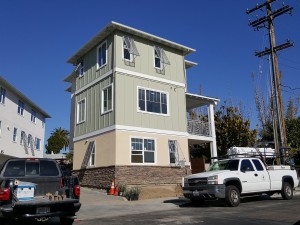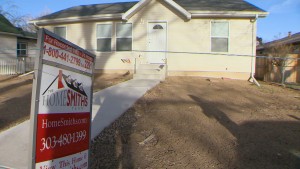James Harman
Live from the Belly Up Tavern tonight!
Live from the Belly Up Tavern tonight!

The balance is shifting from human interaction to mobile-device addiction if these floor plans are an indicator:

We figured the next real estate bubble would look a little different…..
http://blog.sfgate.com/smellthetruth/2016/03/16/marijuana-real-estate-bubble-inflates-in-california/
Excerpts:
A marijuana real estate bubble is inflating in parts of California thanks to new state regulations clarifying the legality of the $1.4 billion medical pot economy in the Golden State.
Newsweek reported March 5 that the pot industry is outbidding the Predator drone industry for commercial real estate in the tiny desert town of Adelanto. City leaders hope to corner the Southern California medical pot market and are speeding to permit mega-farms that will be grandfathered in among the limited number of state licenses for mega-farms.
Consequently, property values in zoned areas have shot up from $1.5 million to $4 million. Desert wasteland once going for 50 to 90 cents per square foot is now going for $12 to $14 — a yearly increase of 14,000 percent, reports state.
Over in Oakland, realtors report bubble pricing is already baked into real estate values inside the city’s waterfront industrial zone, the site of the city’s first licensed pot farms this year or next.
In San Francisco, medical cannabis permits are tied to the building, not the manager — leading to a string of multi-million dollar buyouts of underperforming clubs by investors. One Financial District landlord is charging a reported $1 million in application fees to lease one of 15 small, licensed medical cannabis delivery co-working spaces for up to $15,000 per month each.
The only thing that could slow the bubbles is increased competition from other California towns, which is likely to happen very slowly.

We got the lowdown on the HERO program; here is more on solar leases:
http://journal.firsttuesday.us/solar-woes-loom-for-homeowners-as-tax-credits-sizzle-away/51248/
An excerpt:
Net metering is an agreement between the utility company and the residential or commercial customer. The property owner who generates excess solar energy can sell it back to the utility company for credit to be used later. Solar panels often produce more energy than the home needs during the sunny months. In the winter when cloud cover obscures more of the panels, owners’ net metering credits can be used to pay down their winter utility bills.
When net metering is not an option, property owners are less likely to be interested in buying or leasing a solar system, as this instinctual savings incentive is lost.
The good news for solar in California: net metering continues, and SolarCity is optimistic about potential for even more tax credit growth in the state.
Going solar requires long-term planning. On average, it takes a homeowner 20 years to pay off the full cost of a solar system. Leasing solar panels eliminates the investment, but it still requires a similar, lengthy commitment.
What happens if the homeowner sells before the 20 years are up? There are three options:
Since the solar lease is a contract, interested homeowners may be concerned that signing a solar lease will place a lien on the property. However, the lien is on the solar fixture — not the property. Therefore, if the homeowner stops paying for solar service, the leasing company’s sole recourse is to reclaim the solar system, not foreclose on the property.
On the other hand, taking out a mortgage to pay for the purchase of a solar system does create an additional lien on the property.
Another reason long-term planning is necessary before signing a solar agreement is the possibility of roof maintenance. That is, if the homeowner’s roof needs repairing, they will need to pay to have the panels moved before work can begin on the roof. Therefore, installing panels on a roof that will need maintenance in a few years is not wise.
However, the long-term investment does pay off, though it can take several years. The energy savings can be significant, especially for Southern California homeowners who receive the most sun. The average solar lease savings after the cost of renting the solar panels is a 15% reduction on monthly utility costs. Purchasing solar panels may provide bigger savings, but they won’t be realized until the system is paid off.
Read more about the details of solar leases here.
Read about prepaid solar leases here.
For a critical list of issues homeowners are to consider before signing a solar lease, click here.
Yesterday we noted how the high-end market is brimming with more inventory.
Having 424 active listings priced over $2,400,000 this early in the season is quite a load – it’s more of a late-summer type of number. Could the sluggishness have an impact on the markets priced below?
Probably not – it is the tale of two markets, and they can co-exist.
The underlying problem is that downsizing is the trend, leaving the high-end sellers competing for the scant few buyers.
There were only 17 sales last month of NSDCC homes priced over $2,400,000. Only four of those were in Rancho Santa Fe, where today there are 166 active listings over $2.4 million.
Of the NSDCC houses sold in February, only 12% were over $2,400,000.
Today, 47% of the active inventory is priced over $2,400,000!
Thankfully, the high-enders are a group that can probably endure. If they really needed to sell and had to lop off $1,000,000 to get out, they’d survive. It’s what they would have gotten 3-4 years ago.
What would be really exciting is if the high-end market did catch fire, and add more downsizing buyers to the demand below. I’ve received six written offers on the Salisbury listing – all from owner-occupiers – and it’s gone over list price!
Maybe the lower-end markets can stay hot, and prices rise faster to assist more move-ups! One way or another, we should have an orderly shuffle to the exits.

A reader noticed some list prices being raised, and wondered why.
Here are my guesses:
The MLS hotsheet is where agents get to peruse the new listings of the day, and any price changes. Listing agents who want some fresh attention will change the price in order to get on the hotsheet – but if the sellers don’t want to lower, then raising the price will get you on the hotsheet too.
But it sends the wrong message – primarily that the sellers and/or agent are lowly motivated, unrealistic, or difficult to work with.
Yes, every seller has the right to raise their price, but know that it is a turnoff to buyers and agents. If an agent wants to get on the hotsheet that bad, they can lower the price by a little as one dollar. It is just as annoying as a price increase, but at least you are going in the right direction.
We are in all-time record territory price-wise, with inventory conditions that we have never seen before. I don’t think anyone knows for sure how this will play out, and the higher the price, the less an agent should play around.
Forget the price increases, the crazy-wide price ranges, difficult showings, and outrageous demands like free rentbacks for months, etc.
Make it easy for buyers to pay top dollar!

We had 75 new pendings this past week, the most since early June – the season is on! Only 6 of those new pendings were listed over $2,400,000 and there are still 424 active listings at that price point and higher.
The number of active listings priced over $2.4M has increased 27% in the last eight weeks, and their average list price-per-sf has dropped 11% in the same time frame!
Last year in that category, the number of listings increased only 14%, and average list prices went up 4%.
Click on the link below for the complete NSDCC active-inventory data:

Another city that is experiencing low inventory. At the end of the video, the reporter said in February there were 4,000 active listings, and in 2006 there were 25,000:
http://www.9news.com/news/local/low-inventory-leads-to-creative-home-buying-tactics/78582486
An excerpt:
“We’ve certainly received handwritten letters that have been left on our doorstep,” said Troggio. “In addition to that, we often get legal-typed letters that say, you know, ‘I’m a real estate agent and I have a client who’s interested in purchasing your property.”
Real estate agent, Anthony Rael is familiar with these tactics.
“It shows you the level that some buyers will go to, to try to let it be known that look, I’d love to live in this neighborhood,” said Rael, who serves as chairman of the Market Trends Committee for the Denver Metro Association of Realtors.
The latest DMAR Market Trends Report showed the metro area closed out February with a historically low 3,963 active listings. That’s a six percent decrease in inventory over January and a 2.8 percent decrease year over year.
“Usually around this time of year, as we start to enter the spring market, we start to see more and more inventory online. So far, it hasn’t materialized,” Rael explained. “We’re hopeful, for the buyers’, sake we get some more inventory coming online really soon here.”

Sounds like 3-4 offers by tomorrow:

We had a big turnout today at the open house!